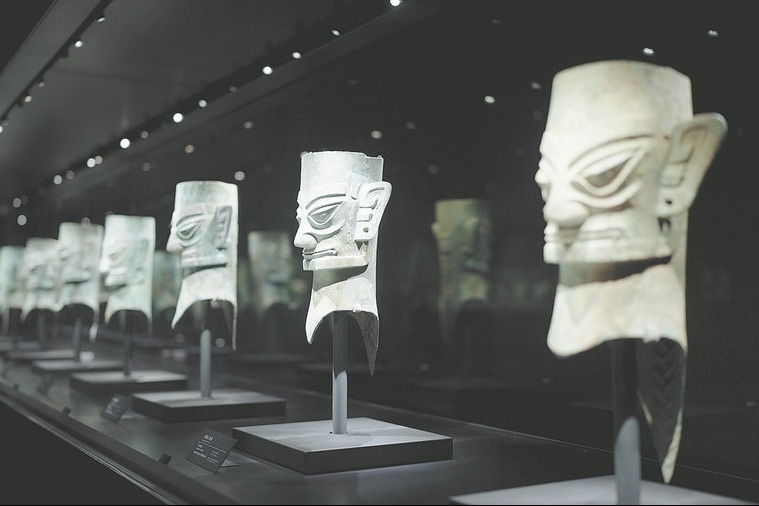Building a low-carbon, livable urban environment
By XU BIN/REN ZUHUA | China Daily | Updated: 2023-09-09 09:03

This year has witnessed a series of extreme weather events, and it appears that the era of "global boiling" is upon us. It is therefore crucial to promote a low-carbon and livable urban environment.
For instance, during the summer, people blamed the glass roof of the waiting hall on the second floor of the Beijing South Railway Station for the excessively high temperatures inside the building. This, indeed, is ironical, because the glass roof was built to let in natural light and make the experience more comfortable for passengers waiting to catch a train in the terminal building, which apparently is inspired by the Hall of Prayer for Good Harvests in the Temple of Heaven in Beijing and symbolizes a harmonious combination of tradition and modernity.
But despite the authorities' commendable initiative to add value to passengers' experience, government departments, urban planners, architects and civil engineers should pay greater attention to the need and rationality of designing and building large public facilities.
After the launch of reform and opening-up, China has urbanized at a rapid pace, signifying the remarkable progress the country has been making on the social and economic development fronts. Of course, we should marvel at China's outstanding accomplishments, but while doing so we should not forget those accomplishments have come at a huge cost of resources and the environment.
The construction industry still faces challenges including low development quality and efficiency. This is evident from its high energy consumption, high emission levels, overall mediocre building quality, and low labor productivity. Worse, according to an International Energy Agency report, the buildings and construction sector accounted for 39 percent of carbon emissions worldwide in 2018.
With the challenges posed by depleting resources and intensifying climate change becoming increasingly severe, energy conservation and emissions reduction have become a global trend. To overcome those challenges, as well as to achieve its dual carbon goals of peaking carbon emissions before 2030 and achieving carbon neutrality before 2060, China has to thoroughly reform the construction industry.
The construction industry in China accounts for 27.5 percent of the total energy consumption, with large public utility buildings occupying less than 4 percent of the total urban building area but accounting for more than 20 percent of the total energy consumed by urban buildings.
Thanks to the development of urban planning and construction, large public utility structures such as high-speed railway stations, airports, exhibition centers, sports stadiums and libraries were built to meet the people's ever-growing needs for a better life. However, the pursuit of unique and grandiose architecture and the need for extensive glass panel facades in buildings in the name of urbanization must be re-evaluated. When designing and building public utility buildings, people's health and comfort, energy conservation, emissions reduction, and environmental protection should be considered as critical elements by urban planners, architects, engineers, developers and plan approval authorities.
Urban planning should be scientific and aimed at improving urbanization, both quantitatively and qualitatively. And urban planners should significantly reduce expansive incremental growth and, instead, focus on "upgrading the existing stock".
There is also a need to align urban development with diverse regional needs and focus on organic renewal and qualitative enhancement within the existing spatial resources, which would require not only improving the quality of individual buildings but also enhancing the quality of open spaces such as the height of and distance between buildings. It would also require comprehensive development and utilization of underground spaces.
While designing buildings and upgrading cities, architects and city planners should take into full account the regional climate and weather pattern. Architects and engineers should weigh various building parameters based on a thorough analysis of both their interior and exterior features. Such an approach can extend the transitional seasons, create a more comfortable atmosphere inside buildings and reduce energy consumption.
Collaboration between architects and engineers is important to maximizing the application of green, low-carbon technologies, as well as the technologies used to improve the quality of living environments in urban and rural areas. Integrating these approaches would help avoid imbalanced development.
In terms of architectural design, digitalization and virtual reality should be used to ensure green design is translated into practical application, and "on-site construction" is replaced by "factory production and on-site assembly", in order to create a new aesthetic language for green buildings.
Additionally, by using intelligent management technology in harmony with local climate and environmental conditions, we can make buildings more comfortable, ensuring various equipment and facilities work smoothly.
Accelerating the development of low-carbon and carbon-negative building materials, too, is necessary, and introduction of experiential intelligent technologies is required to construct "smart buildings".
While the transformation of urban construction can be achieved by promoting "green, ecological, livable and intelligent" concepts, the quality of the living environment can be greatly improved through the coordinated development of green, open and shared urban planning and architecture.
But collective thinking and the involvement of related industries are required to make the whole idea successful.
Xu Bin is research director of the China Architecture Design & Research Group, and Ren Zuhua is a senior architect at the same group. The views don't necessarily reflect those of China Daily.
If you have a specific expertise, or would like to share your thought about our stories, then send us your writings at opinion@chinadaily.com.cn, and comment@chinadaily.com.cn.
























